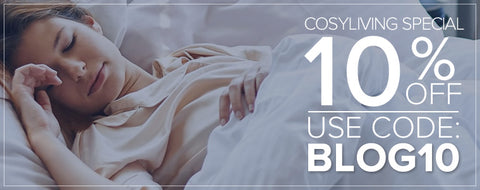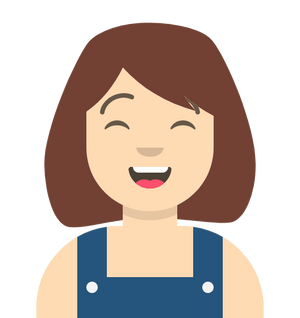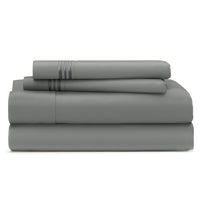
3 Secrets to Deeper Sleep (You Can Start Tonight)
Feeling wired when you should be winding down?
You’re not alone. For many adults—especially over 45—getting consistent, high-quality sleep becomes more difficult with age. Hormonal shifts, aches and pains, night sweats, and even subtle lifestyle factors can chip away at your rest. But better sleep isn’t a luxury—it’s essential for how you age, feel, and function.
You don’t need a total lifestyle overhaul to sleep better. A few science-backed tweaks to your nighttime setup can go a long way. Below, we’re sharing three expert-approved changes you can make tonight to fall asleep faster, stay asleep longer, and wake up truly refreshed!
💤 Quick Look: What You’ll Learn
-
The ideal bedroom temperature (and why it matters more after 45)
-
One often-overlooked reason you’re waking up at night
-
Why breathable layers matter more than you think — and what to swap first
-
A step-by-step wind-down ritual that actually works with your biology

1. Adjust Your Sleep Environment to Match Your Biology
→ Set your space up for real rest, especially as your sleep patterns shift with age.
Sleeping in your 40s, 50s, and beyond doesn’t look the same as at 25, and your bedroom should reflect that.
As we age, our circadian rhythms naturally shift. We tend to produce less melatonin (the hormone that signals sleep), spend less time in deep restorative sleep stages, and become more sensitive to subtle environmental cues like light, sound, and temperature fluctuations.[1,2,3]
Even mild discomfort—like a slightly warm room or a sliver of hallway light—can become enough to pull you out of deep sleep or keep you from falling back asleep after a 3 AM wakeup.
Here’s how to easily set the stage for sleep success:
-
Dial in the temperature:
Set your thermostat between 60°F and 67°F. Research confirms this is the sweet spot for melatonin release and optimal REM cycles—especially important for hot sleepers, those navigating menopause, or anyone prone to night sweats.[1] -
Darken your space:
Invest in blackout curtains or a breathable sleep mask to block ambient light. Studies show that even dim light at night can interfere with melatonin and increase nighttime wakeups.[2] -
Reduce blue light exposure:
Power down electronics 60–90 minutes before bed. Blue light from phones, tablets, and TVs is shown to suppress melatonin more significantly in midlife and beyond.[3] Try replacing screens with soft lighting, music, or light reading. -
Boost natural light during the day:
Recent research found that older adults may need twice as much bright light exposure during the day and half as much at night to maintain proper melatonin rhythms.[4,5] Open those blinds early, get outdoors in the morning, or use a light therapy lamp if needed. -
Quiet your space (or mask disruptive sounds):
Hearing sensitivity can increase with age. Try white noise machines, gentle soundscapes, or even noise-canceling curtains to block out traffic, pets, or household creaks.
 2. Upgrade Your Bedding for Better Breathability
2. Upgrade Your Bedding for Better Breathability
→ Better airflow = better sleep.
If you wake up sweaty and restless or toss the covers off in the middle of the night, your old, stuffy bedding is probably to blame.
Hot flashes, night sweats, and hormonal shifts become more common after 45—and while your body changes, your sleep setup needs to keep up. Most standard bedding (like cotton) traps heat and moisture, making it harder to fall asleep, stay asleep, and enter deeper stages of rest.[6,7,8]
What’s the fix? A breathable sleep system—top to bottom:
Everyday Bed Sheets
→ Ultra-soft, smooth, and designed for better sleep, our Everyday Sheets are made from a durable, breathable polyester blend that’s more resilient than high-thread-count cotton. Hypoallergenic and resistant to fading, shrinking, and staining, they’re easy to care for and built to last. With a secure 360° elastic band and a generous 16" depth, these sheets stay snug all night—no slipping or bunching. Available in 13 elegant colors to match your dream bedroom.
Luxury Down Alternative Comforter
→ Fluffy yet breathable, this comforter blends bamboo viscose and microfiber for a cool, cloud-like feel—without the weight or heat-trapping of traditional down.
Everyday Pillowcases
→ Don’t underestimate the power of a great pillowcase. Our Everyday Pillowcases offer silky softness and lightweight breathability—without the hassle. The durable, hypoallergenic fabric helps repel non-living irritants and keeps your pillows fresh and smooth, night after night. Plus, they’re machine washable, fade-resistant, and gentle on sensitive skin.
Luxury Pillow
→ Our multi-layer Luxury Pillow offers breathable support where you need it most. With shredded memory foam, adaptive transition foam, and a cool-to-the-touch bamboo outer case, it keeps your head elevated and cool for deeper, more restful sleep.
Try this tonight:
-
Swap in one breathable layer—start with your pillowcase or top sheet
-
Wash bedding every 7–10 days to reduce irritants that can disrupt sleep
-
Avoid stuffy materials like cotton, which loves heat and moisture
-
Layer smart: Combine breathable sheets with a lightweight comforter for year-round temperature control

3. Build a Ritual That Signals “It’s Time to Rest”
→ Your body craves rhythm. Give it one.
If sleep feels unpredictable lately, your routine might be to blame.
According to the American Psychological Association, a consistent nighttime ritual is one of the most effective ways to fall asleep faster and sleep more deeply.[9] But the trick isn’t about rigid rules—it’s about creating a wind-down routine that feels soothing, not stressful.
(Like a “sleep cue system”—repeated signals that tell your brain, it’s time to power down).
Try this wind-down flow:
-
90 minutes before bed:
Take a warm shower or bath. It raises your core body temp, which then drops post-bath—a natural signal to your brain that it’s time for sleep.[10] Wrap up in a fresh, fluffy towel to lock in warmth while your body cools down—this transition mimics the natural bedtime decline in temperature. -
60 minutes before bed:
Write down your next-day tasks. Studies show “mental offloading” can reduce sleep anxiety and racing thoughts.[11] Or, sip a caffeine-free herbal tea (like chamomile or lemon balm) to ease tension and prep your nervous system for rest. -
30 minutes before bed:
Dim the lights. Turn off the TV. Put your phone away. This helps reduce melatonin-disrupting blue light and signals your body to enter “rest mode.”
Try This Tonight:
Set a recurring phone alarm titled “Wind Down” for one hour before your ideal bedtime. Keep that final hour screen-free and sensory-light. The goal? Let your body and mind exhale:
-
Stretch gently or practice deep breathing
-
Read a chapter of a feel-good book
-
Listen to calming music or an ambient playlist
-
Change into soft, breathable loungewear that is cozy and calming

Sleep Better—Starting Tonight
You don’t need a total overhaul.
Sometimes, better sleep begins with one soft pillowcase. One breathable sheet. One quiet moment for yourself.
✨ Use code BLOG10 for 10% OFF your first order and start sleeping deeper tonight.
👉 Shop Cosy House Sleep Staples Now!
Resources:
-
Koffel, Erin et al. Sleep health and aging: Recommendations for promoting healthy sleep among older adults: A National Sleep Foundation report, Sleep Health: Journal of the National Sleep Foundation, Volume 9, Issue 6, 821 - 824, https://www.sleephealthjournal.org/article/S2352-7218(23)00196-1/fulltext
-
Gooley JJ, Chamberlain K, Smith KA, Khalsa SB, Rajaratnam SM, Van Reen E, Zeitzer JM, Czeisler CA, Lockley SW. Exposure to room light before bedtime suppresses melatonin onset and shortens melatonin duration in humans. J Clin Endocrinol Metab. 2011 Mar;96(3):E463-72. doi: 10.1210/jc.2010-2098. Epub 2010 Dec 30. PMID: 21193540; PMCID: PMC3047226. https://pmc.ncbi.nlm.nih.gov/articles/PMC3047226/
-
Harvard Health Publishing, Blogs. July, 2024. Harvard Health. "Blue Light Has a Dark Side.” https://www.health.harvard.edu/staying-healthy/blue-light-has-a-dark-side
-
J.J. Poza, M. Pujol, J.J. Ortega-Albás, O. Romero, Melatonin in sleep disorders, Neurología (English Edition), Volume 37, Issue 7, 2022, Pages 575-585, ISSN 2173-5808, https://doi.org/10.1016/j.nrleng.2018.08.004.
-
Zhang, Mingjiao et al. Light Therapy to Improve Sleep Quality in Older Adults Living in Residential Long-Term Care: A Systematic Review, Journal of the American Medical Directors Association, Volume 24, Issue 1, 65 - 74.e1. https://www.jamda.com/article/S1525-8610(22)00790-3/fulltext
-
Bansal R, Aggarwal N. Menopausal Hot Flashes: A Concise Review. J Midlife Health. 2019 Jan-Mar;10(1):6-13. doi: 10.4103/jmh.JMH_7_19. PMID: 31001050; PMCID: PMC6459071. https://pmc.ncbi.nlm.nih.gov/articles/PMC6459071/
-
Sleep Foundation. Nov, 2023. What Causes Night Sweats in Men? https://www.sleepfoundation.org/night-sweats/men
-
Li X, Halaki M, Chow CM. How do sleepwear and bedding fibre types affect sleep quality: A systematic review. J Sleep Res. 2024 Dec;33(6):e14217. doi: 10.1111/jsr.14217. Epub 2024 Apr 16. PMID: 38627879; PMCID: PMC11596996. https://pmc.ncbi.nlm.nih.gov/articles/PMC11596996/
-
American Psychological Association. Monitor on Psychology, Tips for sleep success, July/August 2004, Vol 35, No. 7, https://www.apa.org/monitor/julaug04/tips
-
Haghayegh S, Khoshnevis S, Smolensky MH, Diller KR, Castriotta RJ. Before-bedtime passive body heating by warm shower or bath to improve sleep: A systematic review and meta-analysis. Sleep Med Rev. 2019 Aug;46:124-135. doi: 10.1016/j.smrv.2019.04.008. Epub 2019 Apr 19. PMID: 31102877. https://pubmed.ncbi.nlm.nih.gov/31102877/
-
Scullin MK, Krueger ML, Ballard HK, Pruett N, Bliwise DL. The effects of bedtime writing on difficulty falling asleep: A polysomnographic study comparing to-do lists and completed activity lists. J Exp Psychol Gen. 2018 Jan;147(1):139-146. doi: 10.1037/xge0000374. Epub 2017 Oct 23. PMID: 29058942; PMCID: PMC5758411. https://pmc.ncbi.nlm.nih.gov/articles/PMC5758411/


